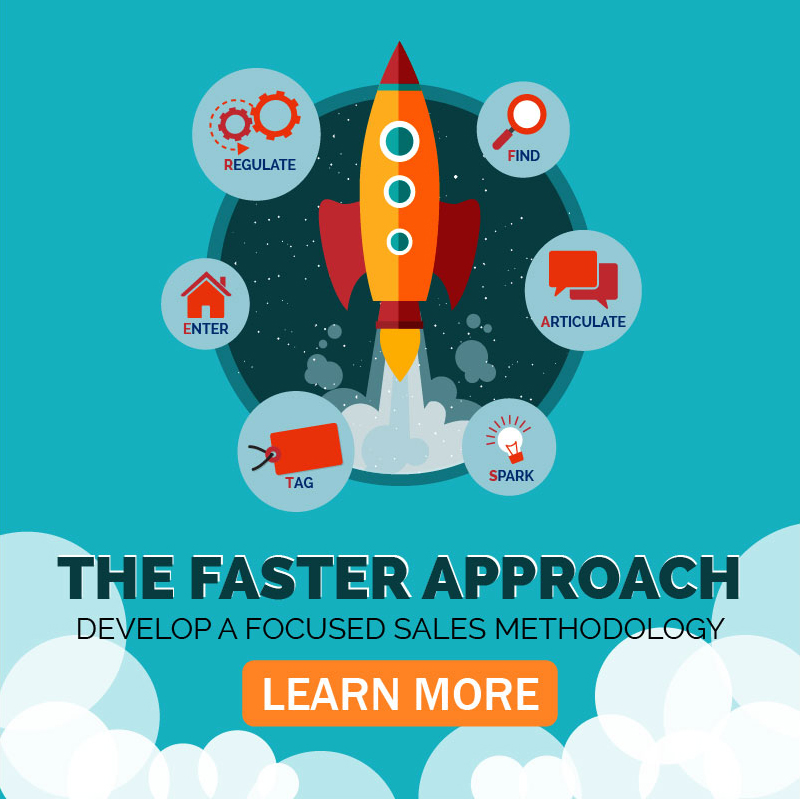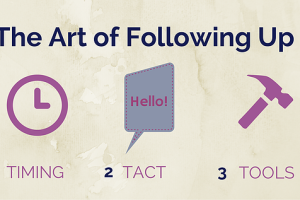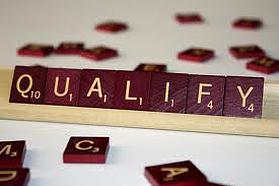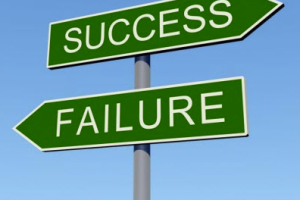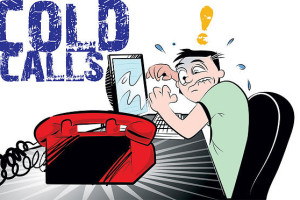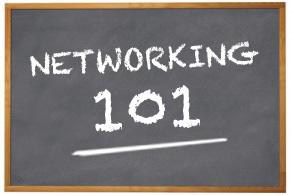This is the sixth in a series of seven posts on the importance of bringing a focused methodology to the madness that is the sales environment.
We’ve accomplished a lot by this point. We’ve “found the need” and “articulated the solution,” communicating real value to the customer. We’ve managed to “spark a fire” and “tag an advocate” to push the deal towards completion. But we’re not done yet.
In complex sales, purchase decisions will be made with input from a number of other key players both within and outside of the buyer’s organization—people we may not have even heard about yet. This is because the nature of complex sales is such that multiple parties will have a stake in the final outcome, and not everyone will see the value of a solution with the same clarity.
If we’ve adequately coached our internal advocates, then we’re already in great shape; but it’s often helpful at this point to step back and look at the bigger picture of the buyer’s decision process, scanning for key individuals who may represent a threat to the deal.
This is where the letter “E” in our acronym comes into play: rather than standing on the sidelines waiting for their advocates to do the job for them, shrewd salespeople “enter the fray” and help pave the way for a favorable decision with these other key players.
Here are a few thoughts on how to go about it:
Keep your enemies close.
It is tremendously tempting for salespeople to spend all of their time talking to the same two or three especially receptive individuals who appear to have the most important roles to play in pushing a deal forward.
But this is perhaps one of the most dangerous things we can do, because complex sales invariably involve a variety of stakeholders of varying degrees of influence within the organization, and it is very likely that at least a few of those will not be friendly to us.
Sometimes this is because they are defenders of the status quo and would attempt to defeat any “solution” because they do not perceive a problem. Other times, our enemies may simply be neutral individuals whom our competitors have already courted. Either way, one of the purposes of seeking out other key players in the deal is to boldly locate potential deal-blockers in time to neutralize them. Ignite Selling principal Kevin Jones explains, “Top performers tend to cast a wide net at the beginning because they do not want to be blind-sided by the surprise entrance of someone they neglected.”
Even with a strong advocate, we do well to approach our enemies and learn what is at stake for them in the deal so that we can make sure those points don’t get neglected in our overall sales approach.
There’s also the thorny issue of office politics. Major purchase decisions tend to become a battlefield where interdepartmental disagreements and interpersonal conflicts already going on in the organization are fought. Sometimes the battle lines are clear from the beginning; often they are not. Even if we’ve felt no pushback from others up to this point in the deal, we’d be careless to assume that every facet of a complex sale will proceed strictly according to rational, sober consideration of features and benefits.
We can bet that somebody, somewhere in the organization, has a personal investment in the outcome that has little or nothing to do with the business case for change. And since these political undercurrents are rarely going to be transparent, we will have to do our own due diligence in discovering them—with our advocate’s help, of course. If one of our enemies has a political stake in opposing us, then we probably won’t get a sympathetic audience; but we can do our best to understand his or her level of influence and make sure that when he or she does attempt to block the deal, all of the strongest facts and figures will clearly be on our side of the table.
Our advocates can help us navigate these turbulent waters, but we need to remember that they still have to work with these people after we’re gone. If we really want to enter the fray, we’re going to have to roll up our sleeves and do some of the dirty work ourselves.
Figure out who the string-pullers are in the organization.
Each of our prospective customers will work in differently structured organizations, but one thing that all of them have in common is a distribution of influence across all levels of decision-making authority. It isn’t simply those who are closest to the decision itself who wield the greatest influence over it; more often than not, it’s the input of half a dozen or so other stakeholders behind closed doors who help determine which solution is chosen.
Our internal advocates will undoubtedly be some of those people, but there may be others who are not on our radar yet, and so we need to make sure we know which other key players in the organization will be drawn into the decision by virtue of their formal or informal influence over their colleagues.
To do this, we begin with the bottom rung of the ladder, where people may seem distanced from the decision but are nevertheless very close to the actual problem that needs solving. “Most C-level executives trust their people,” sales blogger S. Anthony Iannarino observes. “Most of them listen to the consensus of individuals that are closest to the problems, closest to the decision, and who will ultimately own the outcome.”
That means that these individuals—often the end-users of our solutions and their direct reports—have to be sold on the value of our proposition, regardless of whether they bear any formal responsibility for the final decision or not. The last person we want to come up against is a “terminating technical buyer” that we’ve failed to meet beforehand—or worse, one that our competitor got to first.
According to this sales training feature, we’re looking for “a seemingly low-ranking person, whose advice is routinely relied upon by the directors of the company.”
Finding these people out and learning directly from them the principal concerns facing end-users during implementation should be a critical priority for us, because it’s far easier for us to sell an executive on our solutions when we already have influential end-users giving their boss the thumbs-up to proceed.
Next are the middle-level or tangential influencers who may be tapped for advice at some point in the process—the company’s internal go-to people for wisdom in complex decisions. These string-pullers may have no direct stake in who wins or loses, but they do care about their reputation within the organization.
Our internal advocates can help us identify these people, hopefully without us even needing to ask. But in case we’re in the dark, we can always ask our champions things like, “Who does your boss tend to rely on around here for advice making a decision like this? Have we met yet?”
Perhaps our advocate already knows that one of the key executives who will have to sign off on this deal tends to schedule a lunch meeting with a trusted industry observer at least once a month. Wouldn’t we want to get in touch with that informal influencer ahead of time to introduce ourselves? Especially when we’re talking about informal influence, we need to recognize that streams of input affecting final decision-makers may not be well represented on an organizational chart.
With our advocates’ help, we should begin sketching out a relationship map to generate a big-picture visualization of the company’s buying process and its various channels of feedback between heads of departments and trusted internal (or even external) advisors.
This will serve us far better than a formal organizational chart in identifying and neutralizing threats.
Finally, there are ancillary stakeholders we need to consider—people whose jobs include vetting our proposed solutions but who care about very different things than end-users and subject matter experts do. Foremost among these are procurement professionals. These are the people charged with the unenviable task of making sure that their organizations choose the right partners and vendors to work with for particular projects. They tend to care about eliciting the most bang for the least buck.
Sometimes that seems to cut salespeople’s legs out from under them, since the solution with the lowest price tag may not be the best-fit option with maximum value for end-users. Still, the way forward begins with putting ourselves in their shoes for the moment.
“Treating procurement as ‘the enemy’ will quickly make them your enemy,” state the authors of a recent Vantage Partners feature. “You will get better results if you accept that working with them is the new reality. […] The essential shift is to recognize procurement’s legitimate role, and position your own role as an enabler for them.”
It might be helpful to invite procurement representatives to sit in on one or two important meetings with end-users in the organization so that they can better understand the value proposition of our solutions, for instance. Or we might simply need to defend our prices by politely but determinedly presenting the “hard facts” business case, demonstrating in clear metrics how and why the cost is more than justified by the value we offer compared to our competitors.
Remember, professional buyers are just as concerned with the “bang” as with the “buck.” In most cases, they recognize and can soberly assess the trade-offs that come with opting for a cheaper but ultimately less reliable vendor. We just need to make sure that we know our stuff; we want to be the go-to authority in the buyer’s market.
There are similar approaches we might employ with other ancillary stakeholders, too. These might include a technological audit team that must systematically validate the claims of our proposal, for instance, or a legal consultant charged with identifying loopholes in our contracts or anticipating the buyer’s liability exposure.
For each of these key players, we do our best to look at the deal through their eyes and prepare a robust case for our solution in terms that resonate with their immediate concerns rather than our own. This may require us to assume different “sales roles” to suit the needs of whichever person we’re talking to in the moment.
Not every person we meet will have an equal appreciation for the value of the solution we’re proposing, nor will they speak the same jargon. We don’t sell to an executive the same way we sell to a technical end-user. Nor do we pitch an end-user on the business side of the deal like we would a procurement official.
Leverage your competitive intelligence.
All salespeople owe it to themselves to survey their competition. We should have a pretty good idea of who are competitors are and what their offerings look like well before our first meeting with a prospective customer, but in a complex sale with multiple stakeholders, it’s vital for us to continue pursuing competitive intelligence throughout the deal.
Even if we’re industry leaders in our sectors, and even if we’ve managed to position ourselves as a preferred option, it would be foolhardy for us to assume that customers will automatically look to us as the sole provider for a particular solution.
What’s more, if there is a threat to the deal lying in wait somewhere in the organization, we can bet that a competitor will be eager to exploit it. So a big part of entering the fray is figuring out what, in the customer’s mind, looms large as a possible alternative to the solution we’re proposing—whether it’s a similar but less expensive product or an altogether different product—and making sure that we have the necessary competitive intelligence to retain our position as the preferred provider.
Sales strategist Dave Stein suggests that there are three distinct levels of competitive intelligence. The first level concerns facts about competing companies themselves—size, financial situation, reputation in the market, etc. The second level deals with their specific product offerings—features and specifications, service terms, warranties, price levels, etc. Most salespeople will have little trouble uncovering this basic information via some dedicated Web research and industry observation. But it’s the third level of competitive intelligence that is most critical in a complex sale: understanding how our competitors sell themselves—their basic marketing philosophies and strategic approaches, whether they position themselves as the most affordable solution versus the elite or state-of-the-art solution, etc.
Gaining this knowledge will require more sophisticated probing, but once we know who our likely competitors are in a deal, we can tap our internal advocates for some reconnaissance work on our behalf.
In particular, we can try uncovering which key players our competitors are targeting and make sure we neutralize them by positioning ourselves as thought-leaders in the industry who have a deeper appreciation of the organization’s needs than our competitors do. Our ultimate goal, though, is to avoid competing toe-to-toe by sufficiently differentiating ourselves from our competitors in key players’ minds on a matter of immediate importance to their individual stakes in the outcome of the deal.
“In the absence of a unique value or strong differentiation, everything is perceived as being equal,” advises a sales column at Buckman Enochs Coss and Associates. “You need to ensure that your product or service is not perceived that way and that it is never compared directly to your competitor’s product or service.”
The more deeply we know how our competitors do business, the more incisively we’ll be able to undercut their best efforts to win over our customers.
Now as a matter of being ‘professional’ – it should go without saying that in trying to neutralize our enemies and best our competitors, good manners are supremely important.
No mud-slinging allowed. Even if we ultimately lose the deal, we want to go out with integrity and humility, so that if and when a competitor fails to come through for the customer, we’ll be at the top of the Plan B list.
And let’s face it: in a complex sale, the victor is not always going to be the one with the best solution. Very often, it will simply be the one whose solution creates the least friction in the buying organization.
The point of entering the fray is not to fight off every possible encroachment single-handed. It’s to make sure that we maintain our strongest position to the very end, so that if we ultimately lose the deal after getting this far in the process with our customer, it won’t be because we blew it by taking a passive stance.
Assuming we’re successful at this point, however, there remains one final thing for us to talk about. Next post, we’ll turn our attention to regulating sales resources appropriately as we progress with our customers through their buying process.
